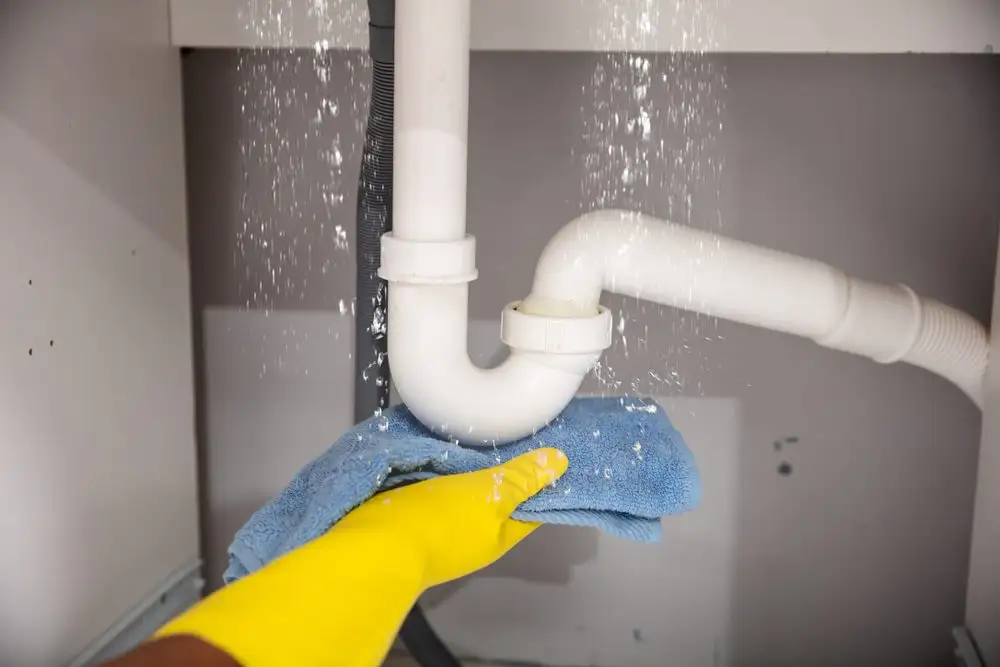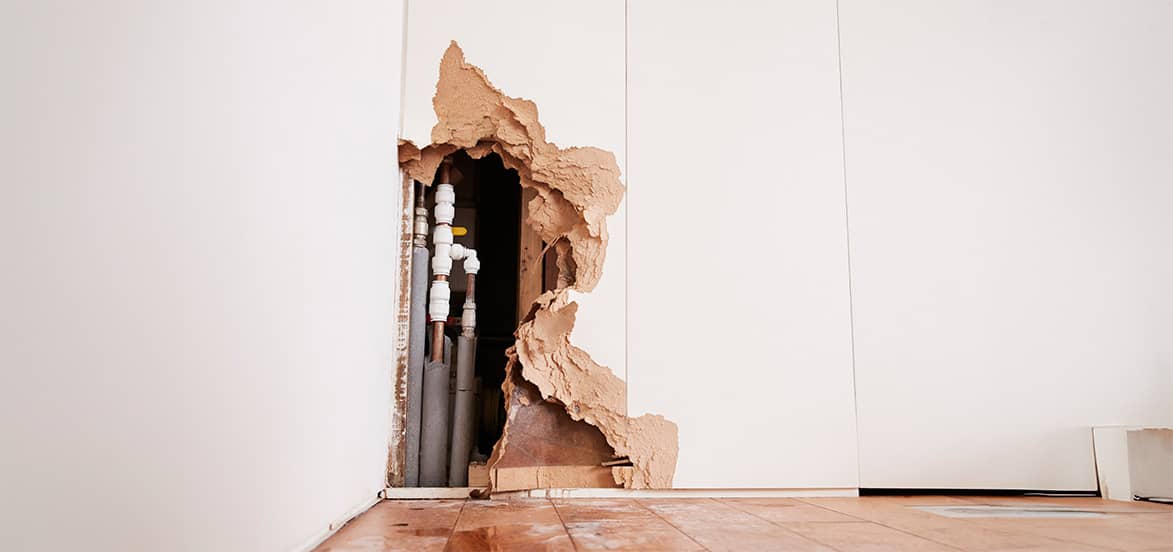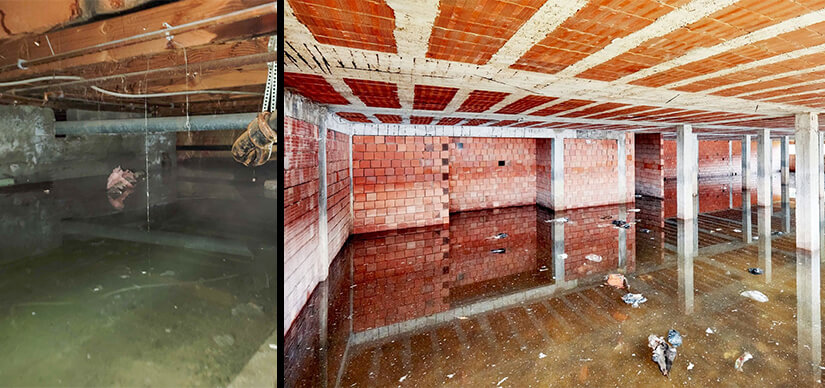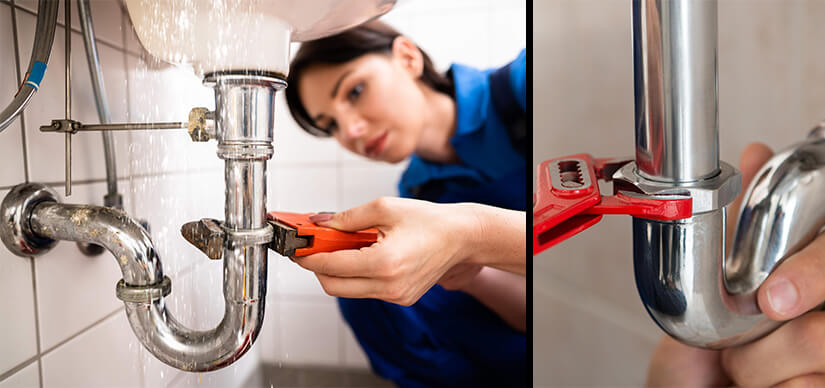Identifying and Locating Water Leaks in Your Home
A small leak can turn into cupped floors, stained ceilings, mold, and a surprise water bill. The good news: Most leaks announce themselves if you know where to look and which simple tests to perform. This homeowner’s guide walks you through clear steps to identify problems early, confirm what you see, and know when to call in a pro. Finding water leaks early saves money, stops damage, and keeps your home healthy.
Look for the Early Warning Signs
Begin with what you can hear, see, smell, and pay close attention to your water bill. Do you hear a quiet hiss when all the taps are off? See paint bubbling, drywall softening, or a musty odor in a specific room? Is your bill higher even though your family’s habits haven’t changed? These are small clues that typically show up a few days or weeks before visible damage. It may help to make a quick list of where you see sounds, smells, or stains as you walk through your home.
Run a Water Meter Test to Confirm a Leak
The meter test is the quickest way to know for sure if you have an active leak.
- Turn off all water-using fixtures and appliances.
- Note the meter reading and small leak indicator (often a triangle or star).
- Wait 15–30 minutes without using any water.
- Check the meter again.
If the indicator has moved or the reading has changed, there is likely a constant flow somewhere in the system. Now you will narrow it down.
Isolate by Zones: Inside vs. Outside
Turn off the valve to the irrigation line and run the meter test again. If the movement stops, the problem is outdoors. If it continues, the issue is inside the house. This easy split lets you avoid unnecessary searching.
Locating Bathroom Leaks: Faucets, Showers, and Toilets: Look for slow drips after the handle is closed and check under sinks for damp cabinets, swollen wood, or a mineral crust around joints. For toilets, add a few drops of food coloring to the tank. If color appears in the bowl within 10–15 minutes without flushing, the flapper or fill valve is leaking. Replacing worn parts usually solves it.
Kitchen and Laundry Room: Appliances and Supply Lines: Pull appliances forward if possible. Look at the dishwasher door gasket, the fridge’s water-line connection, and the washing machine hoses. Rubber hoses become hard and crack with age; upgrading to braided stainless steel reduces the risk. Check for puddling beneath toe-kicks and around the laundry drain box. Wiping a dry paper towel along each connection is an easy way to spot a slow drip.
Water Heater and Mechanical Rooms: Check the pan beneath the heater and the relief valve discharge line. Moisture, rust streaks, or rumbling noises suggest maintenance is past due. For tank-style heaters, also check the drain valve and nipples on top. A wet ring on the floor near the heater is cause for immediate attention.
Walls, Ceilings, and Floors: Brown rings on ceilings, peeling paint, or cupped hardwood usually mean moisture is working its way through the building materials. Trace the stain to the room above or the nearest plumbing wall. Gently press suspect areas; soft spots indicate long-term saturation. If you own a basic moisture meter, compare readings from a known dry area to the stained spot to confirm.
Clues for Slab and Crawl Spaces: Warm tiles in one area, hairline cracks that widen, or a persistent musty odor near the baseboards can point to a hot-water line problem under a slab. In crawl spaces, look for dripping from supply lines, wet insulation, or pools of water. If you suspect a sub-slab leak, don’t guess, specialized detection equipment can locate it with minimal disruption.
Checking the Outside: Irrigation and the Main Line
Walk around the yard and look for patches of grass that are always greener, soft soil, or standing water when the sprinklers are off. Check backflow preventers and valve boxes for steady drips. At the side of the house, open the hose bibs briefly and listen; if the hissing quiets when you close the street-side shutoff valve, it can signal a main-line issue.
Things to Try Before Calling a Leak Detective
Tighten any hand-tight connections under sinks, replace leaky toilet flappers, swap old washing machine hoses, and insulate exposed lines. If the meter shows flow with all the fixtures and appliances turned off, or if more than one room shows symptoms, it’s time to call in a leak-detection specialist. Leak-detection specialists use acoustic listening, tracer gas, and thermal imaging to find precise locations, which minimizes opening walls or concrete.
Help Prevent Recurrence
A few simple habits go a long way:
- Flush your water heater yearly to reduce sediment buildup and pressure spikes.
- Install a thermal expansion tank on closed systems.
- Softening very hard water slows internal pipe erosion.
- Replace old rubber supply lines with braided stainless.
- Test the main shutoff valve twice a year so it will work when you need it.
- Monitor your bill each month; sudden spikes often mean trouble before you notice it.
Ready to Stop Hidden Leaks? Call All Star Plumbing Service
If your meter is creeping, you hear a faint hiss, or you’ve spotted unexplained damp spots, don’t wait. Shut off the main if water is actively flowing, move valuables out of the area, and call All Star Plumbing Service. Our technicians use acoustic listening, thermal imaging, and moisture mapping to pinpoint the source with minimal disruption, then give you clear repair options and upfront pricing. Protect your home, your bills, and your peace of mind. Schedule professional leak detection with All Star Plumbing Service today.







